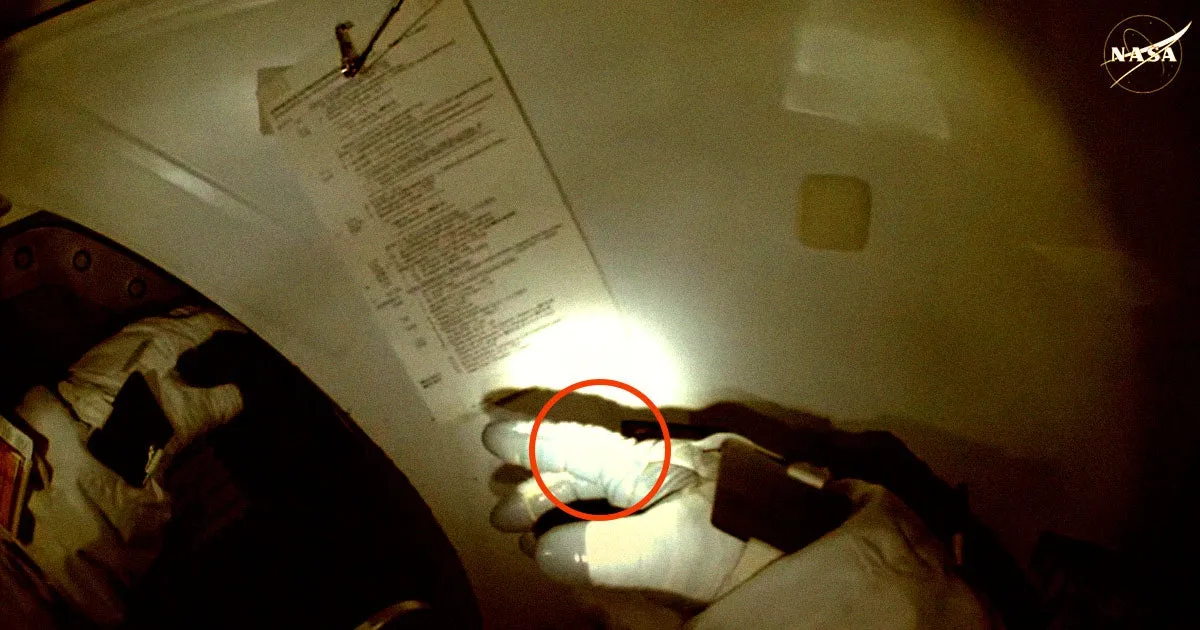
This morning, NASA astronauts Anne McClain and Nichole Ayers made headlines as they stepped outside the International Space Station (ISS) in their Extravehicular Mobility Unit (EMU) suits. This remarkable event marked a rare all-female spacewalk, aimed at mounting a bracket for a future solar array. The enhancement is expected to increase the station's power generation capacity by up to 30 percent.
However, as reported by NASASpaceflight, the mission, which lasted six and a half hours, was not without its challenges. Shortly after the spacewalk commenced, McClain discovered a slice in the index finger of her right glove. This prompted ground control in Houston to take a closer look at the situation. McClain communicated her observations, stating, "If it helps, when I bend it, it's kind of right at the corner where the finger bends." The ground team quickly established a video streaming connection to McClain's helmet camera for a detailed assessment.
As Houston requested, "You wanna move it a little closer, so we can have a closer view?" McClain complied, stating, "I can kind of see, it's right at the bend." Fortunately, the assessment revealed that the issue was a string of Turtleskin along the seam of the glove. Turtleskin is a specialized woven fabric manufactured by NASA contractor Warwick Mills. The ground team concluded that the problem did not pose a serious risk to safety, allowing the spacewalk to continue as planned.
Interestingly, Anne McClain, who is not only a US Army colonel but also a former professional rugby player, had been waiting for six years to participate in an all-female spacewalk. According to CBS, spacesuit fitting issues had delayed her opportunity. In March 2019, NASA had to cancel plans for the first-ever spacewalk by two women astronauts—McClain and fellow astronaut Christina Koch—after McClain realized she needed a medium-sized spacesuit torso. Consequently, astronaut Nick Hague took her place, as the appropriate suit size could not be made available in time.
The first women-only spacewalk eventually took place in October 2019, performed by Koch and astronaut Jessica Meir, seven months after McClain missed her chance. This incident underscores the ongoing challenges NASA faces with its aging EMU suits, which have been criticized for discomfort and ill-fitting designs, particularly for women.
The issues with the EMU suits extend beyond just McClain's experience. Women have faced significant spacesuit fit challenges for decades. While many of the EMU’s modular parts come in various sizes, many components, especially those designed for shorter women, have never fit well. This problem reflects a broader issue in male-dominated fields, where ill-fitting uniforms are common, from military attire to fire department safety gear.
With the ISS set to retire in less than five years, the urgency for a long-awaited successor to the existing EMU is growing. The current design has not seen significant updates since the 1980s. The aging suits are beginning to show their wear, just like the ISS itself. In a blog post from 2022, NASA elaborated on the meticulous inspection process for the gloves of EMU suits, which are personally fitted for each astronaut. Ground control uses photography and detailed analysis to ensure their readiness for spacewalks.
The mission concluded on a positive note, with McClain finally achieving her long-awaited goal—completing the fifth-ever all-female spacewalk over five years after her missed opportunity. This historic event not only highlights the achievements of women in space exploration but also emphasizes the need for continued advancements in spacesuit technology.
For more updates on spacewalks and advancements in space exploration technology, stay tuned.